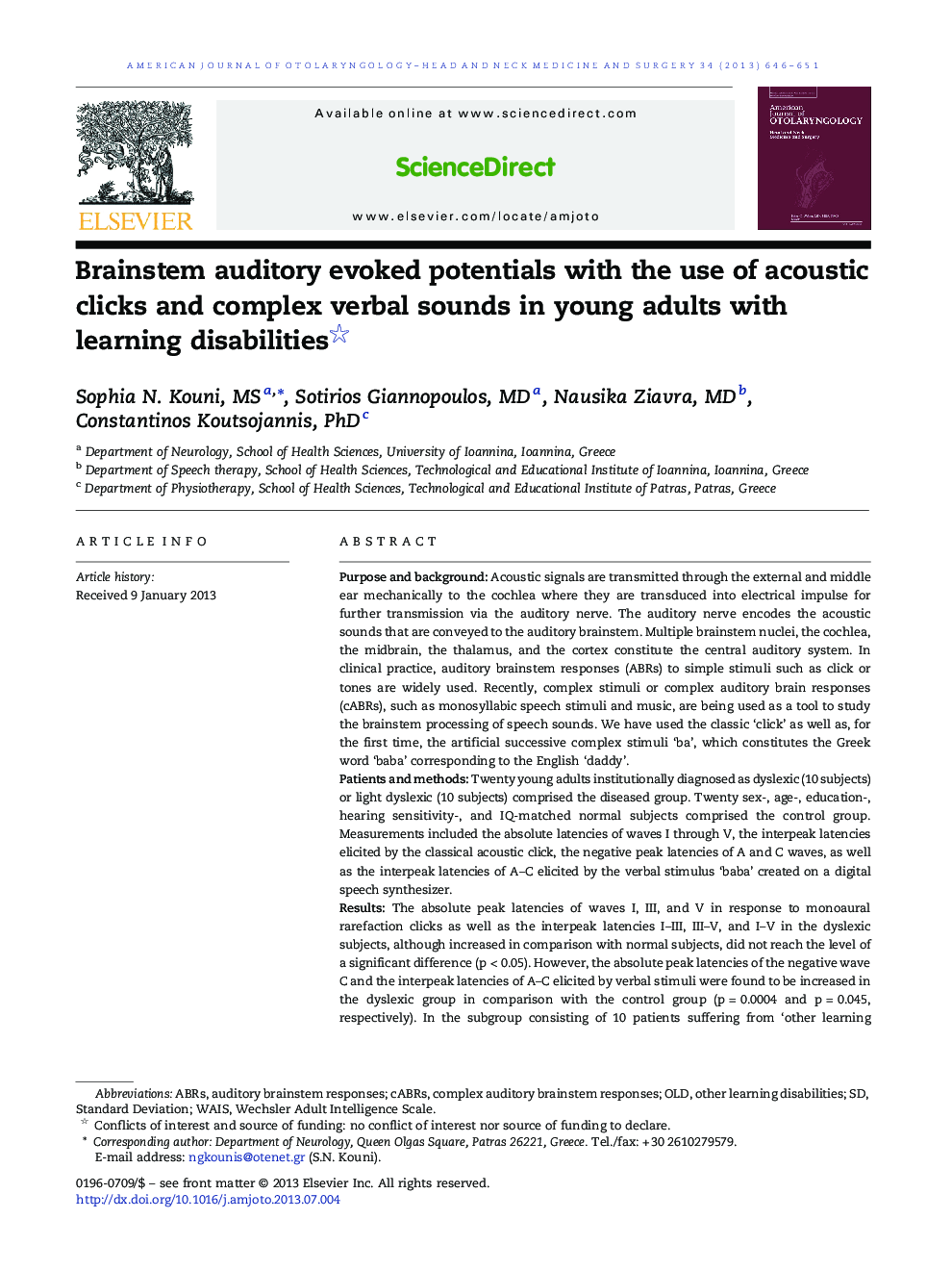| کد مقاله | کد نشریه | سال انتشار | مقاله انگلیسی | نسخه تمام متن |
|---|---|---|---|---|
| 4103740 | 1605246 | 2013 | 6 صفحه PDF | دانلود رایگان |

Purpose and backgroundAcoustic signals are transmitted through the external and middle ear mechanically to the cochlea where they are transduced into electrical impulse for further transmission via the auditory nerve. The auditory nerve encodes the acoustic sounds that are conveyed to the auditory brainstem. Multiple brainstem nuclei, the cochlea, the midbrain, the thalamus, and the cortex constitute the central auditory system. In clinical practice, auditory brainstem responses (ABRs) to simple stimuli such as click or tones are widely used. Recently, complex stimuli or complex auditory brain responses (cABRs), such as monosyllabic speech stimuli and music, are being used as a tool to study the brainstem processing of speech sounds. We have used the classic ‘click’ as well as, for the first time, the artificial successive complex stimuli ‘ba’, which constitutes the Greek word ‘baba’ corresponding to the English ‘daddy’.Patients and methodsTwenty young adults institutionally diagnosed as dyslexic (10 subjects) or light dyslexic (10 subjects) comprised the diseased group. Twenty sex-, age-, education-, hearing sensitivity-, and IQ-matched normal subjects comprised the control group. Measurements included the absolute latencies of waves I through V, the interpeak latencies elicited by the classical acoustic click, the negative peak latencies of A and C waves, as well as the interpeak latencies of A–C elicited by the verbal stimulus ‘baba’ created on a digital speech synthesizer.ResultsThe absolute peak latencies of waves I, III, and V in response to monoaural rarefaction clicks as well as the interpeak latencies I–III, III–V, and I–V in the dyslexic subjects, although increased in comparison with normal subjects, did not reach the level of a significant difference (p < 0.05). However, the absolute peak latencies of the negative wave C and the interpeak latencies of A–C elicited by verbal stimuli were found to be increased in the dyslexic group in comparison with the control group (p = 0.0004 and p = 0.045, respectively). In the subgroup consisting of 10 patients suffering from ‘other learning disabilities’ and who were characterized as with ‘light’ dyslexia according to dyslexia tests, no significant delays were found in peak latencies A and C and interpeak latencies A–C in comparison with the control group.ConclusionsAcoustic representation of a speech sound and, in particular, the disyllabic word ‘baba’ was found to be abnormal, as low as the auditory brainstem. Because ABRs mature in early life, this can help to identify subjects with acoustically based learning problems and apply early intervention, rehabilitation, and treatment. Further studies and more experience with more patients and pathological conditions such as plasticity of the auditory system, cochlear implants, hearing aids, presbycusis, or acoustic neuropathy are necessary until this type of testing is ready for clinical application.
Journal: American Journal of Otolaryngology - Volume 34, Issue 6, November–December 2013, Pages 646–651